Understanding Autism: Genetic Factors and Beyond
Autism spectrum disorder (ASD) is a complex neurodevelopmental condition influenced by an intricate interplay of genetic and environmental factors. As scientific research advances, it becomes increasingly clear that genetics play a significant role in the development of autism, although they are not the sole determinants. This article explores the current understanding of autism's genetic basis, discusses recent discoveries, unpacks misconceptions, and highlights how genetics and environmental influences combine to shape this multifaceted disorder.
Genetic Contribution to Autism: What the Evidence Shows
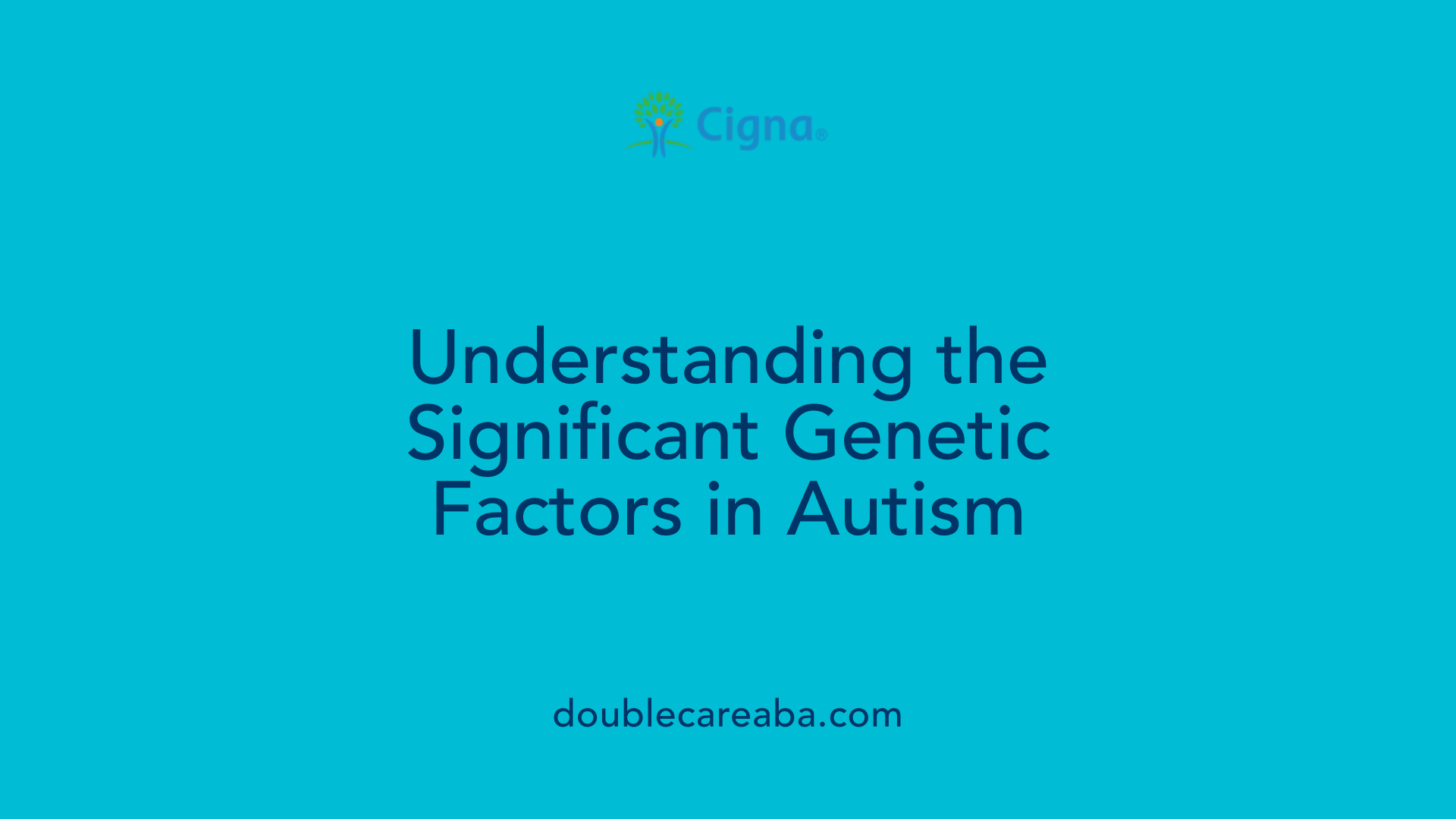
How heritable is autism and what are common inheritance patterns?
Autism spectrum disorder (ASD) is known to have a significant genetic component. Heritability estimates often range between 70% and 90%, implying that genetics play a major role in its development. This high heritability suggests that if one family member has autism, others, especially relatives, are at a higher risk.
Twin studies provide strong evidence supporting the genetic influence on autism. Research shows that the lifetime probability of both twins being autistic is more than 90% in identical (monozygotic) twins. In contrast, the concordance rate for fraternal (dizygotic) twins is around 34%. These findings indicate that shared genetics largely contribute to autism risk, though the wide range of twin study results (from 36% to as high as 95.7%) reflects variability due to different study designs and populations.
Family inheritance patterns are complex, involving multiple genes rather than a single genetic cause. Common genetic variations, specific gene mutations, and chromosomal abnormalities, such as deletions or duplications like 16p11.2, are associated with higher autism risk. Genes like SHANK3, MECP2, and others involved in synapse formation and neural communication have been linked to autism.
In addition to inherited genetic factors, spontaneous mutations — called de novo mutations — also contribute to autism. These mutations occur randomly during development and are not inherited from parents. They are estimated to account for roughly 30% of cases, especially in children with no family history of autism.
While genetics predominantly influence ASD risk, environmental factors and gene-environment interactions further modulate the likelihood of developing autism. Overall, the evidence underscores a complex interplay of inherited gene variants and spontaneous mutations that shape autism susceptibility.
| Aspect | Contribution | Details |
|---|---|---|
| Heritability estimates | 70-90% | High genetic influence; supports heritable basis |
| Twin studies | Concordance up to 95.7% in MZ twins | Reinforces strong genetic role; variability exists |
| Family inheritance | Involves multiple genes and structural variations | Includes genes like SHANK3, MECP2, and chromosomal changes |
| De novo mutations | Account for 30% of cases | Spontaneous genetic mutations not inherited |
Research continues to identify specific genes and genetic pathways involved in ASD, promising better understanding, diagnosis, and personalized interventions.
The Role of Specific Genes in Autism Spectrum Disorder
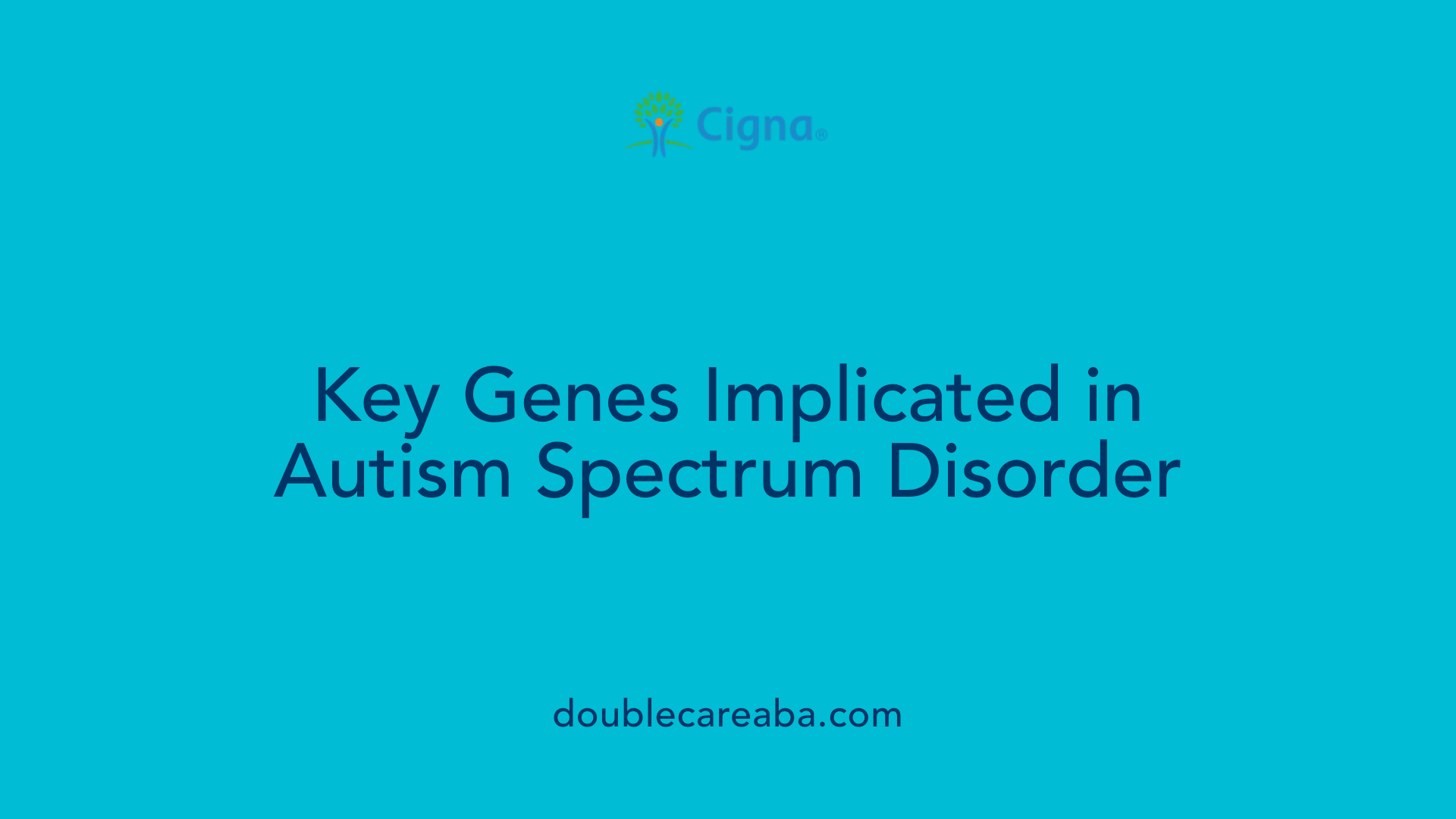
What are the genetic factors involved in autism spectrum disorder?
Genetic factors are fundamental in the development of autism spectrum disorder (ASD). Studies estimate that genetics contribute approximately 70-80% to the risk of ASD, with evidence coming from twin and family research. Over 1,000 genes have been linked to ASD, many impacting brain development, synapse formation, and neural communication.
While some genetic mutations are rare and spontaneous, known as de novo mutations, others are inherited from parents. These include gene disruptions in critical genes such as SHANK3 and FMR1, which can substantially increase ASD risk. Notably, genetic syndromes like Fragile X and Tuberous Sclerosis are associated with higher autism susceptibility, but they represent only a small part of the overall cases.
Several biological pathways are affected by genetic variations, influencing how nerves form and connect. These pathways include chromatin remodeling, Wnt signaling, and Notch signaling. Disruption in these pathways can interfere with normal brain development, leading to autism traits.
The genetic landscape of ASD is immensely complex. It involves common variations that slightly elevate risk and rare mutations that can cause more significant effects. This diversity explains why autism presents in many different forms and intensities, highlighting the disorder's genetic heterogeneity.
| Genetic Factor Type | Examples | Influence on ASD | Additional Notes |
|---|---|---|---|
| Candidate Genes | SHANK3, FMR1, DDX53 | Increase vulnerability | Affect synapse function and neural plasticity |
| Gene Mutations | De novo copy number variants | Often have large effect | Occur spontaneously in the affected individual |
| Chromosomal Abnormalities | 15q11.2 deletions, 16p11.2 duplications | Associated with developmental delays and ASD | Detected via microarray testing |
| Biological Pathways | Wnt, Notch, chromatin remodeling | Disrupted pathways disrupt neural development | Central to understanding ASD mechanisms |
Understanding the genetic basis of ASD is crucial for diagnosis and tailoring treatments. Ongoing research aims to clarify which genes and pathways are most influential, paving the way for better interventions and genetic counseling.
Understanding De Novo Mutations and Their Impact
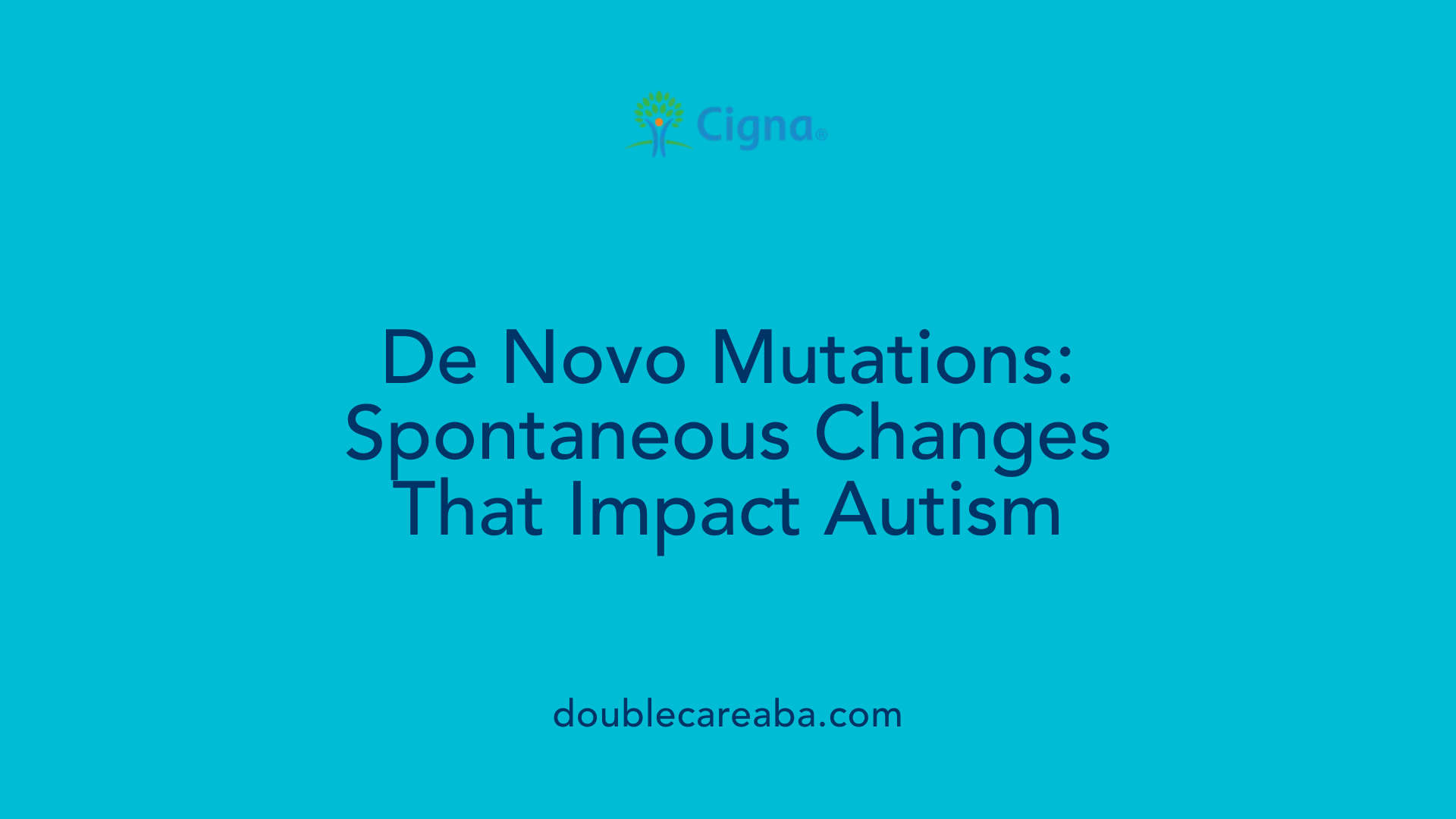
What are de novo mutations and how do they affect autism risk?
De novo mutations are spontaneous genetic changes that happen in the embryo's developing cells and are not inherited from the parents. These mutations can significantly influence autism development, especially in cases where there is no family history of the condition.
Research indicates that nearly half of all autism cases may be linked to de novo mutations. These new genetic variants often involve alterations in genes responsible for brain development and neural communication.
One notable gene affected by such mutations is DDX53 on the X chromosome. Recent studies have observed maternally inherited variants in DDX53 in individuals with ASD, primarily affecting males, which might explain the male predominance in autism spectrum disorder. The DDX53 gene and others on the X chromosome, like PTCHD1-AS, are being actively studied for their roles in autism.
Spontaneous mutations tend to be more damaging when they occur in genes critical to neurodevelopment, especially those needing two functioning copies for normal operation. These mutations often lead to disruptions during key development phases, such as cortical formation in utero.
Overall, de novo mutations are responsible for about 20% of autism diagnoses. They tend to affect genes involved in nerve cell growth, synapse formation, and overall brain wiring, contributing to the diverse traits observed in ASD.
Genetics and Biological Pathways in Autism
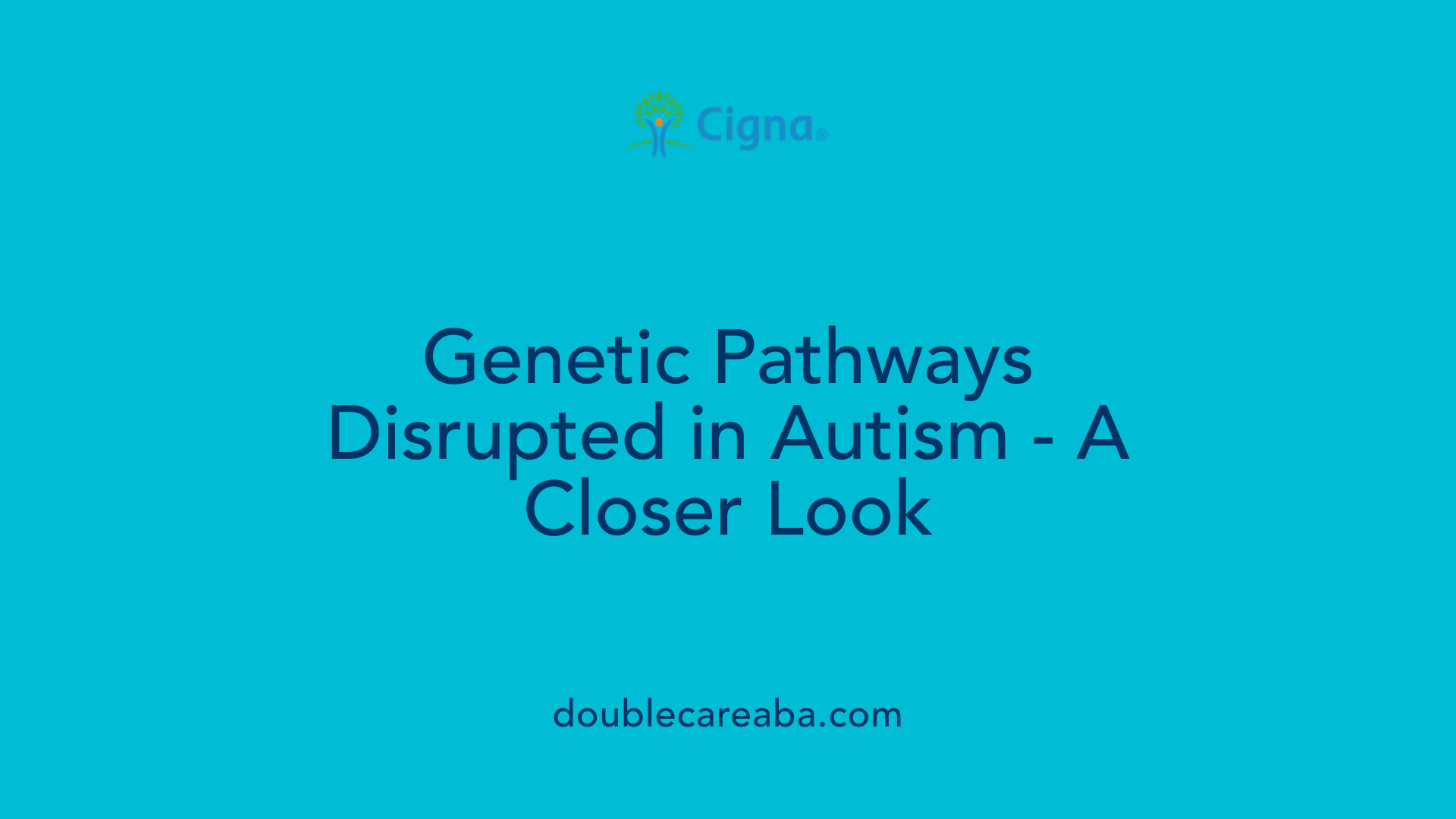
What are the genetic factors involved in autism spectrum disorder?
Genetics play a major role in autism spectrum disorder (ASD), with research estimating heritability between 70% and 80%. Twin studies reveal that if one identical twin has autism, there's over a 90% chance the other will too, highlighting the strong genetic influence.
Scientists have identified more than 1,000 genes linked to ASD. Many of these genes are involved in critical aspects of brain development, such as neural connectivity, synapse formation, and neural communication. Both inherited gene variants and spontaneous mutations, known as de novo mutations, contribute to risk.
Rare genetic mutations, including copy number variants and disruptions in genes like SHANK3 and FMR1, often have large effects, whereas common genetic variations tend to influence risk in a subtle manner.
Furthermore, disruptions in key biological pathways—including chromatin remodeling, the Wnt signaling pathway, and Notch signaling—are implicated in autism. These pathways regulate gene expression and neural development, and their dysfunction can lead to atypical brain structure and function.
Certain genetic syndromes are also associated with higher autism risk, such as Fragile X syndrome and Tuberous Sclerosis. Although these syndromes are linked to increased probability, they only account for a small portion of all ASD cases. This variability underscores the complex and heterogeneous genetic basis of autism.
Understanding these genetic factors is vital for advancing diagnostic techniques, such as genetic testing, which can identify specific mutations and inform treatment strategies. Overall, autism arises from a mosaic of genetic influences affecting brain pathways that govern neural connectivity and development.
Environmental Influences on Autism Risk
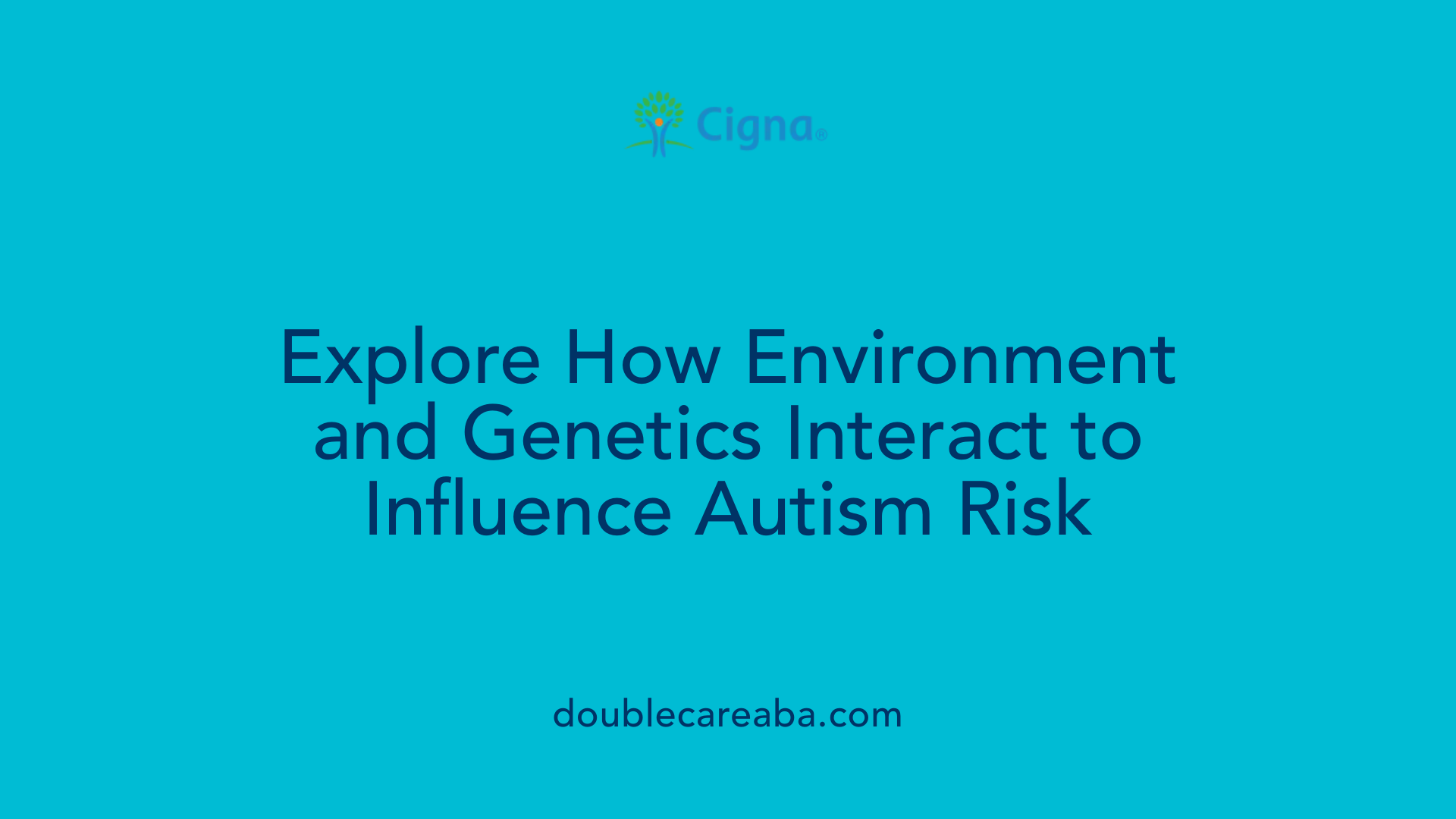
What role do environmental factors play in autism spectrum disorder?
Environmental influences are an important component in the development of autism spectrum disorder (ASD). These factors can impact early brain development and interact with genetic predispositions, leading to an increased risk.
Prenatal exposures are among the most studied environmental risks. Pregnant women exposed to air pollution, pesticides, or heavy metals may pass these substances to their developing fetus, potentially disrupting neural development through mechanisms like inflammation or oxidative stress. For example, prenatal exposure to air pollution such as particulate matter has been linked to higher autism risk.
Maternal health conditions during pregnancy also contribute. Obesity, diabetes, and immune system disorders can alter the intrauterine environment, affecting fetal brain growth. Maternal infections or immune responses during pregnancy have been associated with increased susceptibility to ASD.
Birth complications further elevate the risk. Preterm birth, very low birth weight, and oxygen deprivation during delivery can interfere with normal brain development. These obstetric issues may cause injury or abnormal maturation of neural circuits.
Other factors like advanced parental age and lifestyle choices—such as smoking or drug use during pregnancy—also play a role. They may influence genetic expression or fetal development through various biological pathways.
In conclusion, although genetics form the core of autism risk, environmental exposures during critical periods especially before and during birth significantly contribute. The development of ASD is best understood as a complex interplay between genetic susceptibilities and environmental challenges to neurodevelopment.
Myths and Facts About Autism Causes

What misconceptions exist about the causes of autism?
Many false beliefs about the origins of autism still circulate. One of the most common myths is that vaccines, especially the MMR vaccine, cause autism. However, numerous rigorous studies have found no scientific link between vaccination and autism, and the original study suggesting such a connection was retracted due to poor research methods.
Another misconception is that parenting styles, such as overprotective or neglectful parenting, are responsible for autism. This is simply not true; autism is primarily a neurodevelopmental condition rooted in genetics and brain differences.
Some people mistakenly view autism as a mental illness or a contagious disease, but it is actually a lifelong condition involving atypical brain development that affects social interaction and communication.
Stereotypes also exist, such as the idea that all autistic individuals possess savant skills or are violent. In reality, autism presents a wide spectrum of traits, and abilities vary greatly among individuals.
Overall, many misconceptions stem from misinformation. Scientific research confirms that genetics and biological factors—like gene mutations and brain development differences—are the main causes. Dispelling these myths is essential for fostering understanding and supporting individuals on the autism spectrum.
The Importance of Genetic Testing and Early Diagnosis
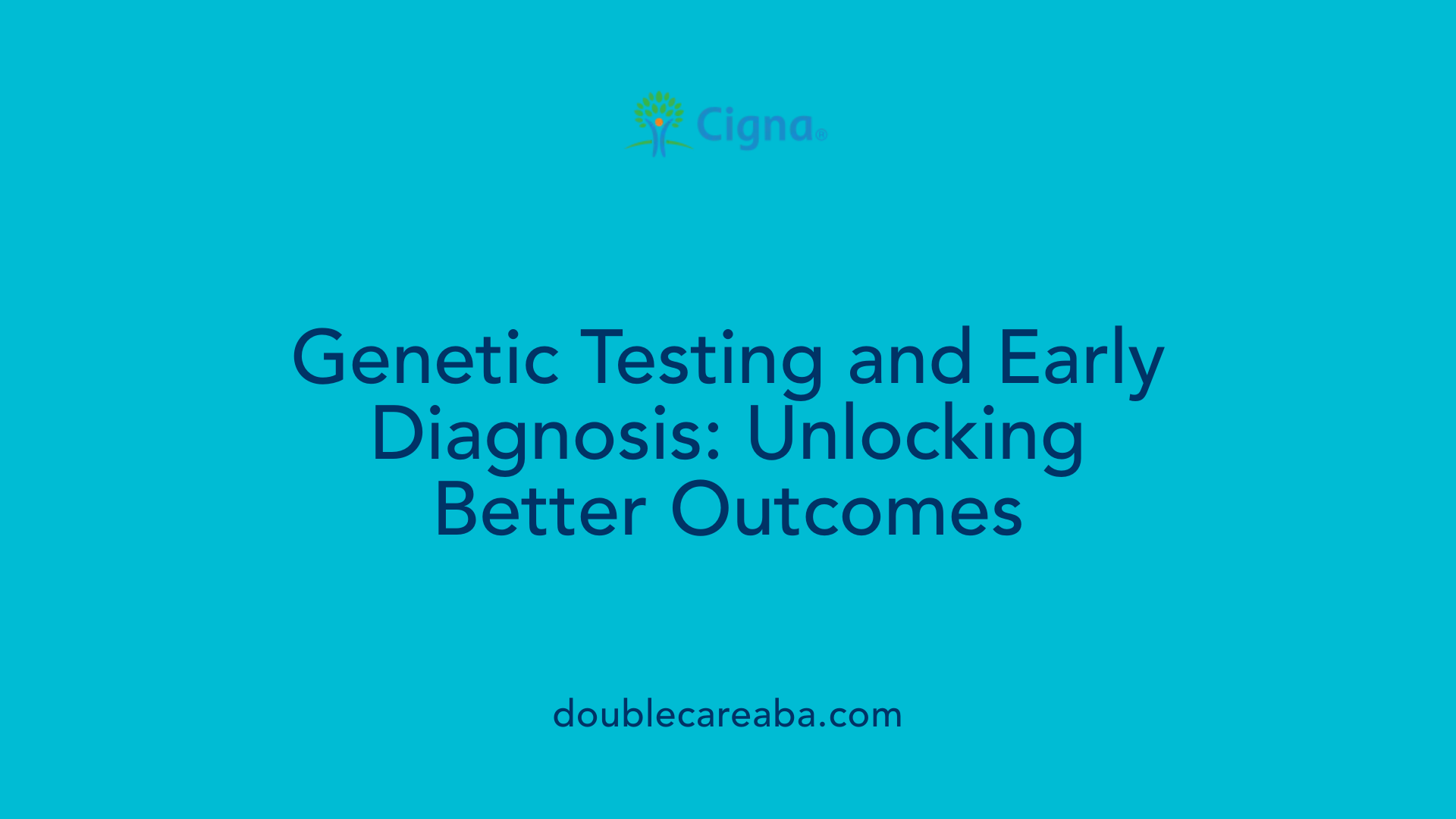
Are there genetic testing options available for autism?
Yes, genetic testing options are available for autism. The most common initial test is chromosomal microarray analysis, which can identify genetic variations in about 10% of cases. Additional tests include fragile X syndrome testing, especially for males over age 3, as it is a well-known genetic condition linked to autism. Exome sequencing is another advanced method that can detect mutations in approximately 8-25% of cases, providing deeper insights into individual genetic makeup.
These tests do not diagnose autism by themselves but help identify genetic factors that may contribute to a child’s condition. They can uncover underlying genetic syndromes, inform treatment strategies, and alert families to potential health issues. Additionally, genetic findings can guide future health monitoring and provide valuable information for family planning.
How is the diagnostic process conducted?
Diagnosing autism primarily involves behavioral assessments and developmental evaluations. Since there is no medical test for autism itself, health professionals observe a child’s social interaction, communication skills, and behavior patterns, usually by age 2 or 3.
Early diagnosis is crucial. When combined with genetic testing, it enhances understanding of individual cases and suggests personalized intervention methods. While behavioral assessments determine if a child has ASD, genetic tests can reveal specific genetic factors behind their symptoms.
How are genetic syndromes identified?
Genetic syndromes associated with autism include fragile X syndrome, Rett syndrome, and tuberous sclerosis. These can be identified through targeted genetic testing, such as microarray analysis, and specific gene tests for mutations known to cause these conditions.
Identifying these syndromes can provide clarity about a child's developmental challenges and guide targeted treatments and therapies. It also helps in understanding the biological basis of autism and in assessing risks for other family members.
How does genetic testing guide treatment?
Genetic testing helps tailor treatment plans based on underlying genetic factors. For example, discovering a mutation related to fragile X syndrome may lead to specific interventions or therapies suited to that syndrome.
Moreover, genetic insights can inform medication choices, as pharmacogenetics considers genetic profiles to optimize medication efficacy and reduce side effects. Overall, genetic testing enhances personalized care and improves long-term management of individuals with autism.
| Testing Method | Detection Rate | Purpose | Additional Notes |
|---|---|---|---|
| Chromosomal microarray | About 10% | Detects copy number variations and chromosomal abnormalities | First-line test recommended by authorities |
| Fragile X testing | Age-dependent | Identifies fragile X syndrome, a common genetic cause | Especially recommended for males over age 3 |
| Exome sequencing | 8-25% | Finds gene mutations linked to autism | Used in complex cases or when other tests are negative |
| Targeted gene tests | Varies | Tests for specific mutations like DDX53 or PTCHD1-AS | Focused on X chromosome-related genes |
Understanding the available genetic testing options is a vital step in comprehensive autism diagnosis and care. They not only clarify causes but also guide targeted interventions, making early diagnosis and personalized treatment more effective.
Emerging Research and Future Directions in Autism Genetics
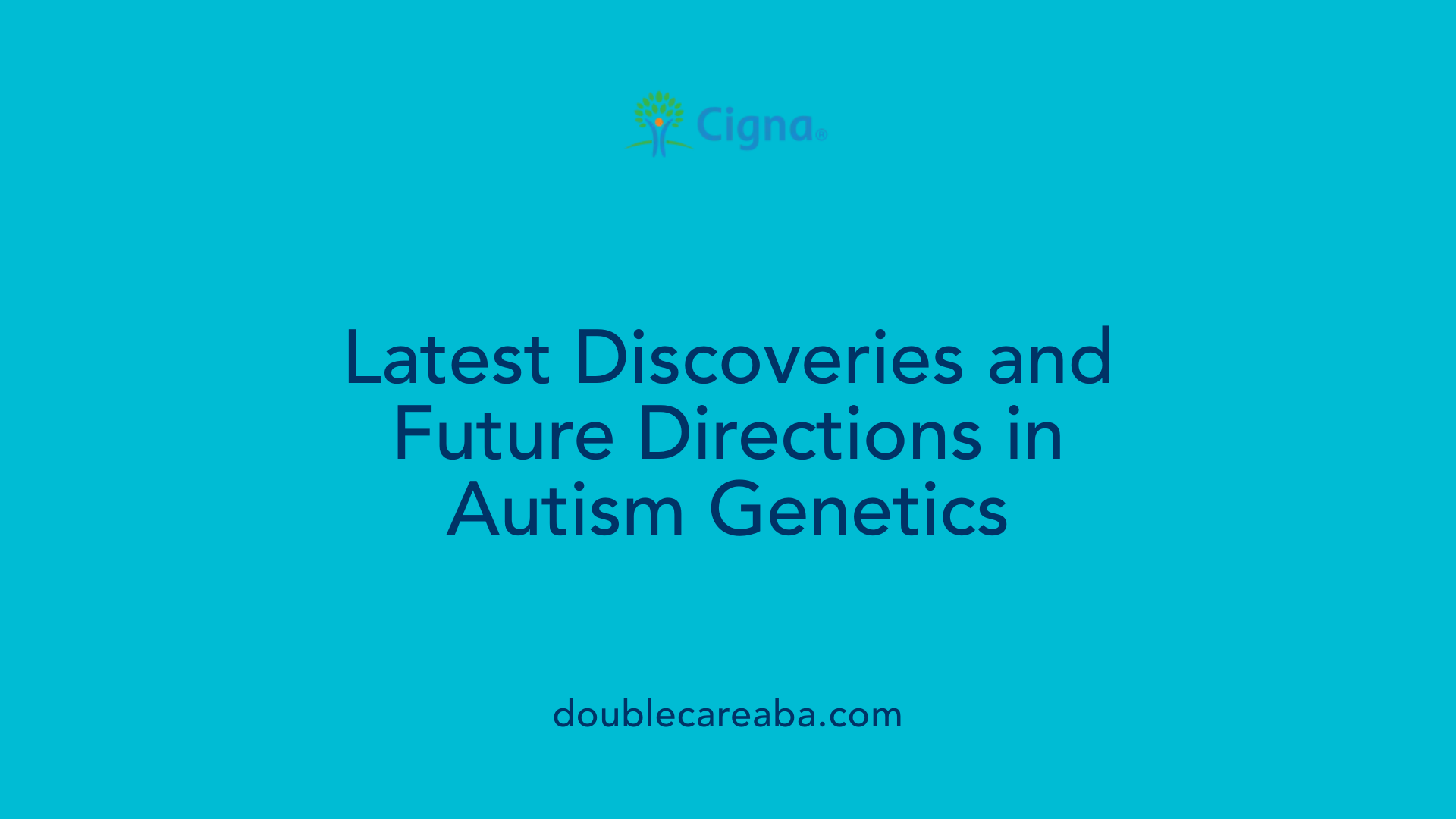
Are there recent scientific findings on the genetics of autism?
Recent breakthroughs have considerably deepened our understanding of autism’s genetic basis. Researchers have pinpointed numerous genes associated with ASD, including recent discoveries involving DDX53 and FGF13 genes located on the X chromosome. Variants in these genes are often inherited maternally, contributing to the higher prevalence of autism in males.
Large genetic studies involving thousands of families have uncovered numerous new autism-related genes, with over 800 genes now linked to the disorder. Techniques such as whole-exome sequencing and chromosomal microarray analysis have been instrumental in identifying these genetic variations, particularly in cases with additional health issues. These advances enable more precise diagnoses and shed light on biological pathways critical for brain development.
Research utilizing brain tissue and single-cell RNA analysis is revealing how genetic risks influence neural cell growth, synapse formation, and brain circuitry. Pathways involving chromatin remodeling, Wnt, and Notch signaling are among those affected in autism, offering new targets for therapeutic intervention.
The integration of genetic data with behavioral and neuroimaging findings opens the door to personalized approaches in autism treatment. Continuous research efforts aim to translate these genetic insights into innovative therapies that could modify disease progression or improve quality of life.
Overall, recent advances affirm the importance of genetics in autism and highlight promising directions for future research, including the development of gene-based therapies and tailored interventions.
Looking Ahead: The Path to Better Understanding Autism
As research continues to uncover the intricate genetic factors underlying autism, it becomes increasingly clear that the condition results from a complex interplay between numerous genes and environmental influences. The high heritability estimates underscore the importance of genetic research and testing, which can aid in diagnosis, personalized intervention, and the development of targeted therapies. At the same time, debunking myths about causes—particularly disproving the vaccine-autism link—is crucial for public understanding and support. Ultimately, a comprehensive approach that integrates genetics, environment, early diagnosis, and tailored support holds the promise of improving outcomes for autistic individuals and fostering greater societal inclusion.
References
- What causes autism? | Autism Speaks
- Autism Spectrum Disorder (ASD) Symptoms & Causes
- Heritability of autism - Wikipedia
- New genetic clues uncovered in largest study of families with ...
- Autism spectrum disorder - Symptoms and causes - Mayo Clinic
- Where does autism come from when it doesn't run in the family?
- Genetic discovery links new gene to autism spectrum disorder
- The genetic mystery of why some people develop autism - BBC















